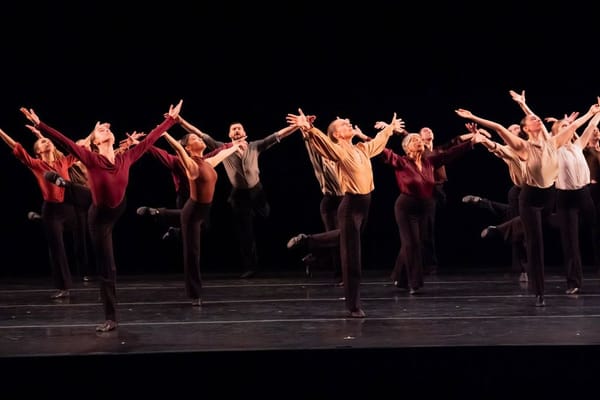Taylor Cubed
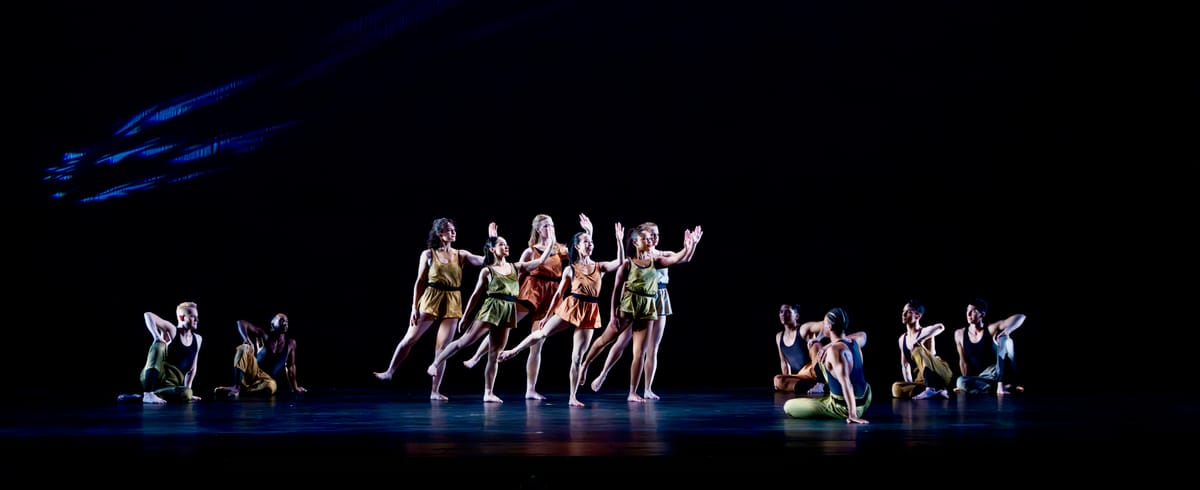
"Arden Court", "The Word", "Syzygy"
Paul Taylor Dance Company
David H. Koch Theater
New York, New York
November 21, 2024
This all-Taylor program included works showing some of Taylor’s frequent themes, from the bright, cheerful “Arden Court”, through the dark and somber “The Word”, and finishing with the bursting energy of “Syzygy”, all danced with an impressive power. The works, for all their differences, had Taylor’s confident and imaginative use of structure to reinforce the various moods. His distinctive vocabulary, so full of stag leaps, bouncy jumps, sudden pauses, and creative lifts is a choreographic language of apparently infinite accents. The dancers all moved with a powerful commitment, but the veteran Madelyn Ho got an especially vigorous workout, as she was featured an all three works, an astounding achievement.
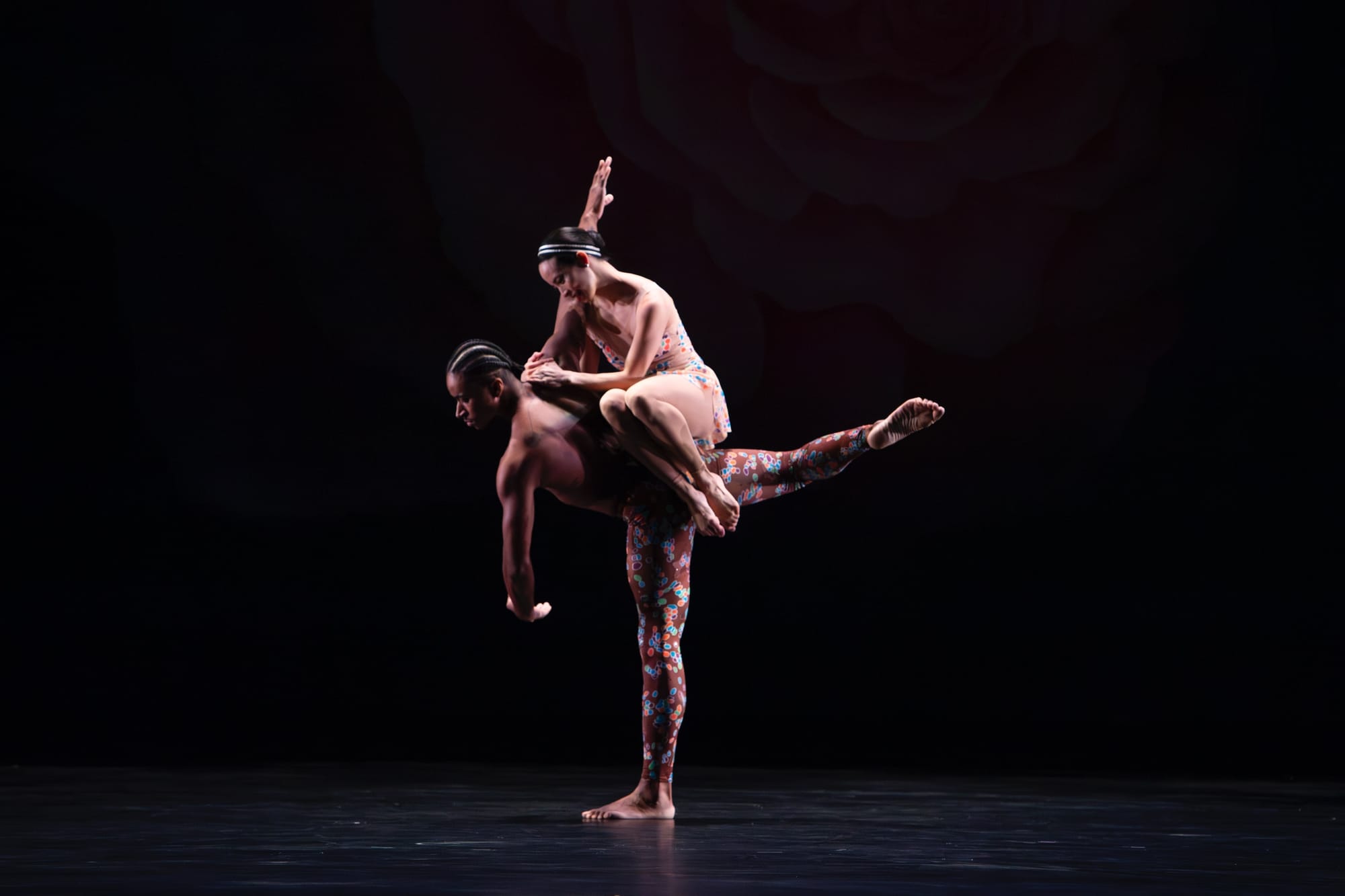
“Arden Court”, from 1981, is a joyful explosion to the Baroque music of William Boyce for three women and six men, moving in ever shifting groupings in front of a large red rose. It is one of Taylor’s visions of Elysium, one of his A works, so to speak, along with “Aureole” and “Airs”. And like them, there is a hint of melancholy, an acknowledgment that there will always be outsiders who wander in and out of the group. The men who leapt on so merrily opening surrounded Devon Louis, walking slowly, almost obliviously, until he stopped to hold a long statuesque balance with superhuman ease; he is an eloquent adagio dancer. Louis and Ho had an odd pas de deux, as she floating around him low to the ground or lifted high above his head. He appeared not to see her, as if she were an imaginary joy. There was no imagination in the pas de deux danced by Lisa Borres Casey and John Harnage, as she seemed to ooze femininity and he responded with an easy courtliness. Jessica Ferretti and Lee Duveneck seemed to have a calmer and secure relationship, dancing with a flowing serenity.
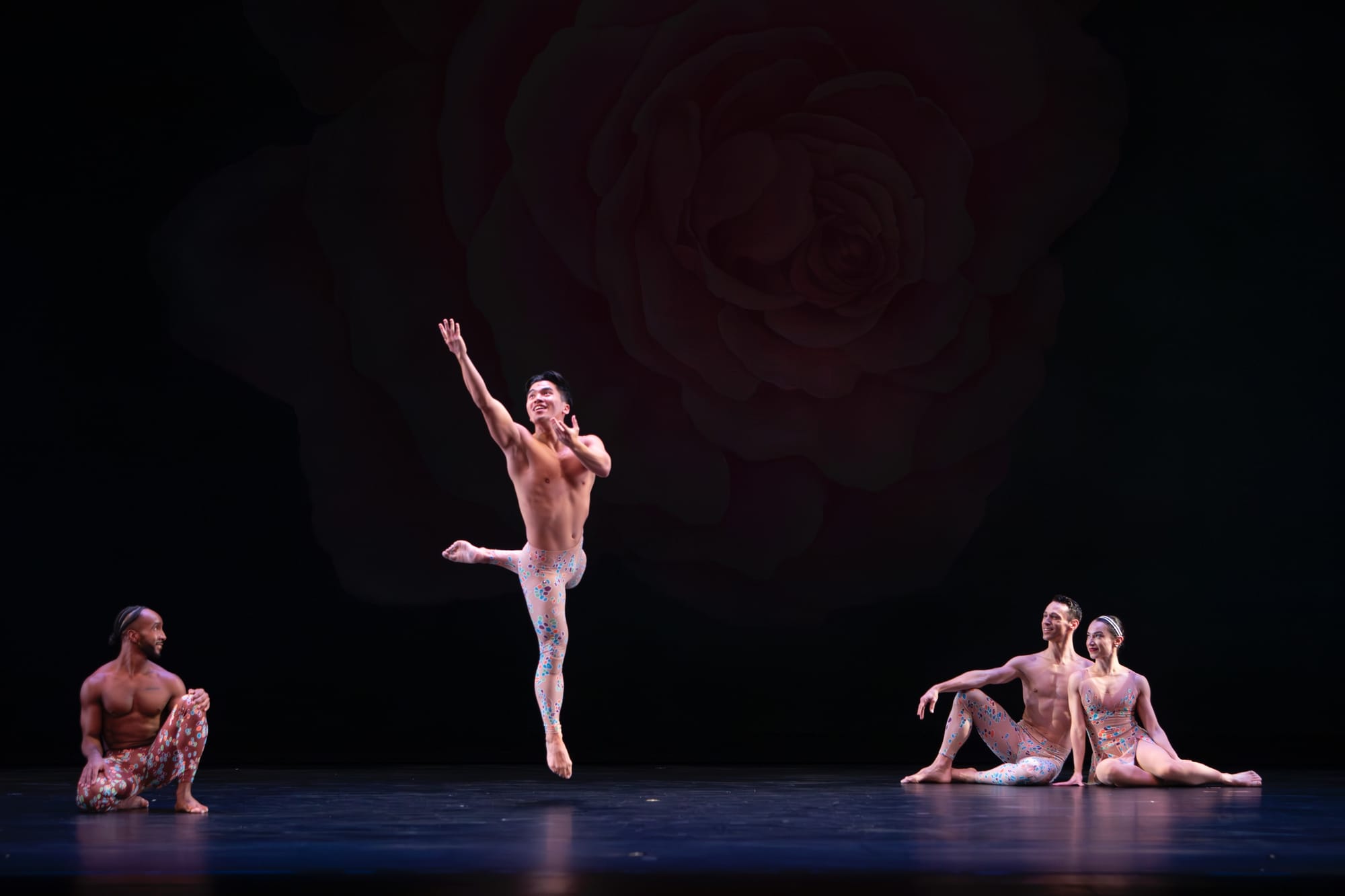
Taylor’s Paradise has room for friendships too, and Alex Clayton and Austin Kelly danced a cheerfully competitive conversation, throwing a variety of jumps at each other before bounding off. The applause had just started when they jumped back on again like practiced vaudeville performers, rushing back on with a slight nod to the audience for an even faster encore. The six men (Kenny Corrigan was the powerful sixth) got to play around some more with a series of supported cartwheels, ending up with one facing the wrong way, before the more formal ending. Three groups of three (two men and one woman) formed and reformed, a vision of perfect but not rigid, harmony.
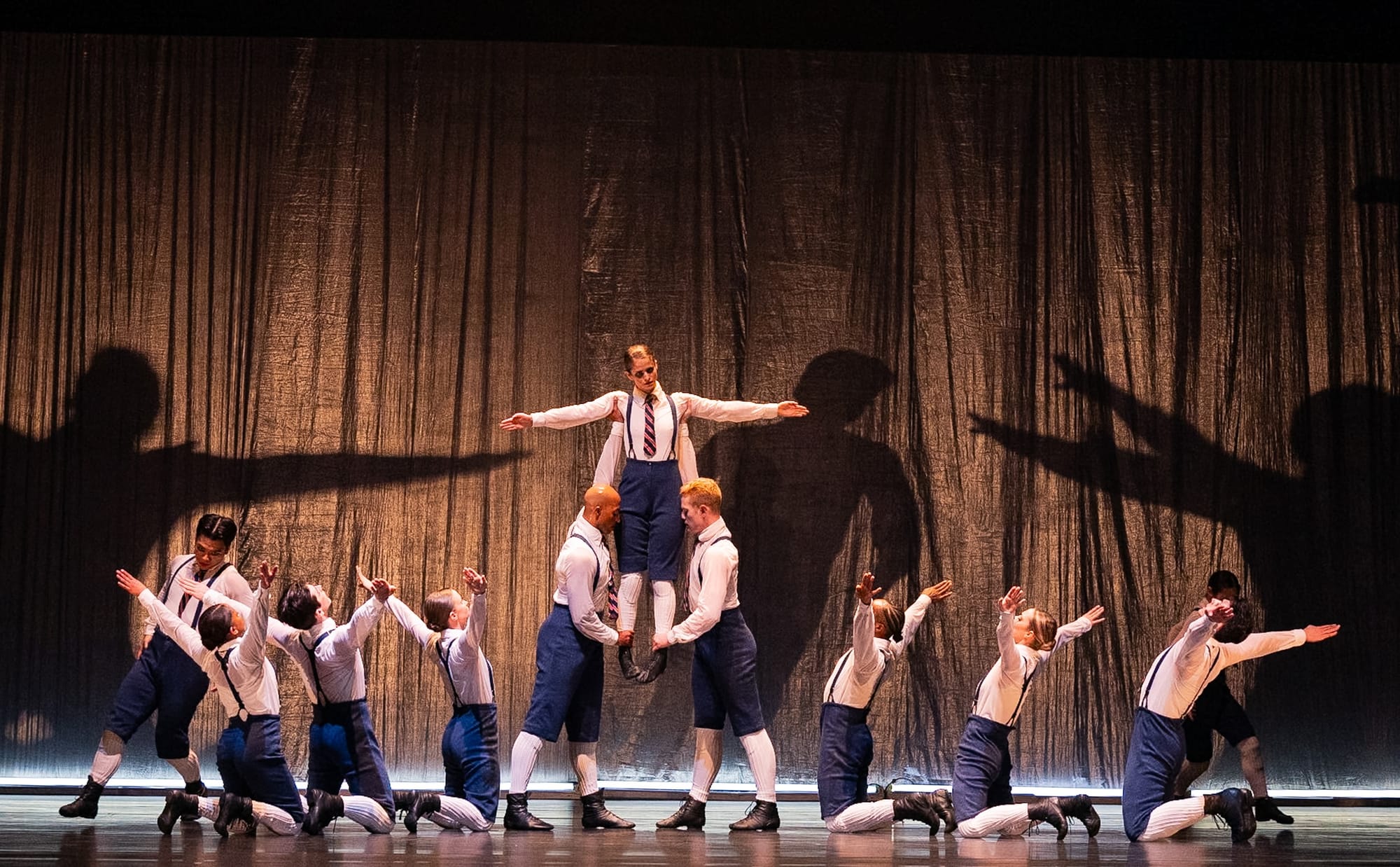
There was a lot of rigidity in “The Word”, Taylor’s 1998 examination of a community trapped by conformity. Eleven dancers, (five women and six men) are costumed by Santo Loquasto as school boys, childish and androgynous, with slicked back hair, heavy eye makeup, and bright red lips. Taylor has said that one of his inspirations was the 1997 show “The Glory of Byzantium” at the Metropolitan Museum of Art, and the dancers large dark eyes and frozen faces to resemble those haunting portraits. The dancers moved with stiff and rigid jerks, pounding their chests every of often, as if trying in vain to find an individual inside.
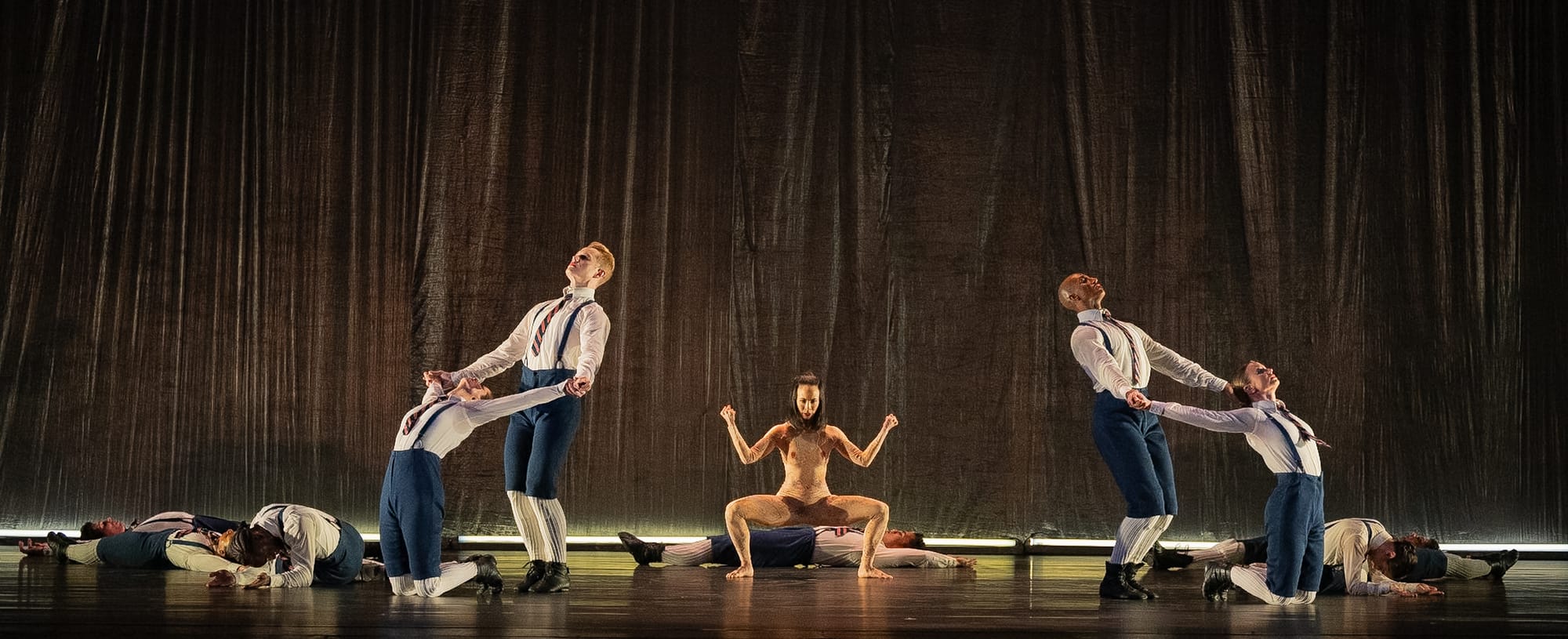
The program quotes Hebrews “For our God is a consuming fire”, and the work is a despairing picture of the group captured by religion; there are several references to the Crucifixion. The 1998 version had the astoundingly fierce Lisa Viola dressed in green which a hint of an Eastern deity in her headdress, moving among the group like a heartless and greedy snake; this seemed to indicate that religion itself, not just Christianity was at the heart of the poisonous control. In 2002, the costume was changed to a nude bodystocking; Ho danced the role like a vicious Eve, determined to get revenge for her expulsion from Eden by forcing humanity to remain forever childless and obedient.
There were a few attempts to break away. Kristin Draucker danced a powerful solo, cradling an imaginary baby until she bent backwards as if pulled by an unseen source; the group as a whole was more powerful than any individual, as the mimed gestures “hear no evil, see no evil, speak no evil” showed that ignoring issues was easier than confronting them, and the work ended with the group bowing down in unison to the triumphant Ho. It was a powerful but very dark work.
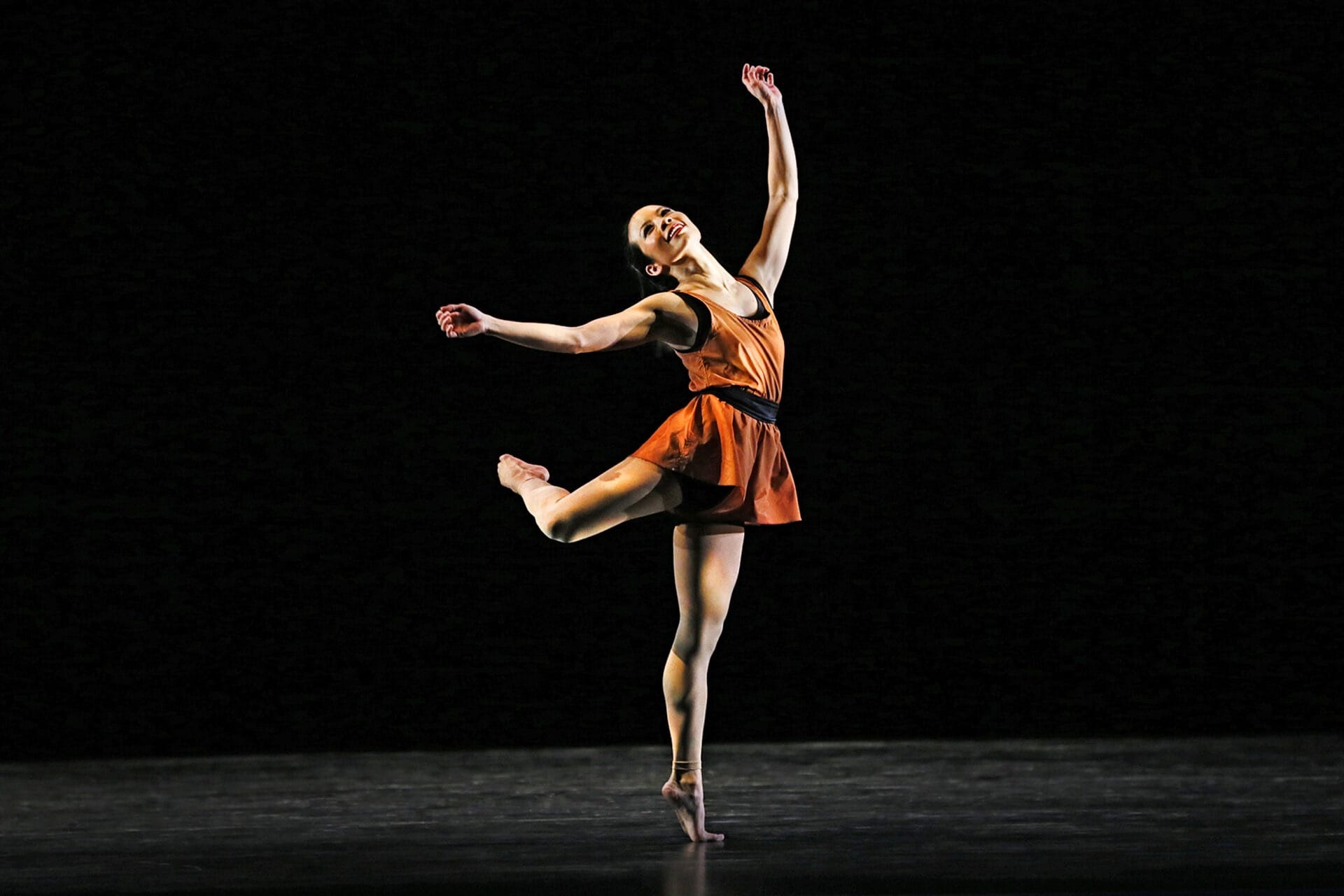
“Syzygy” (1987) which, according to the program means “the nearly straight line configuration of three of more celestial bodies in a gravitational system”, is equally powerful, but not as dark, though the backdrop (lighting by Jennifer Tipton) is black with a burst of constellations. The gravitational pull seemed to come from Ho, standing like Mercury in the middle of a celestial disco dance. The dancers, dressed in rompers of clear, pale colors designed by Santo Loquasto, threw themselves into the choreography with a controlled frenzy as the music rippled through their bodies.
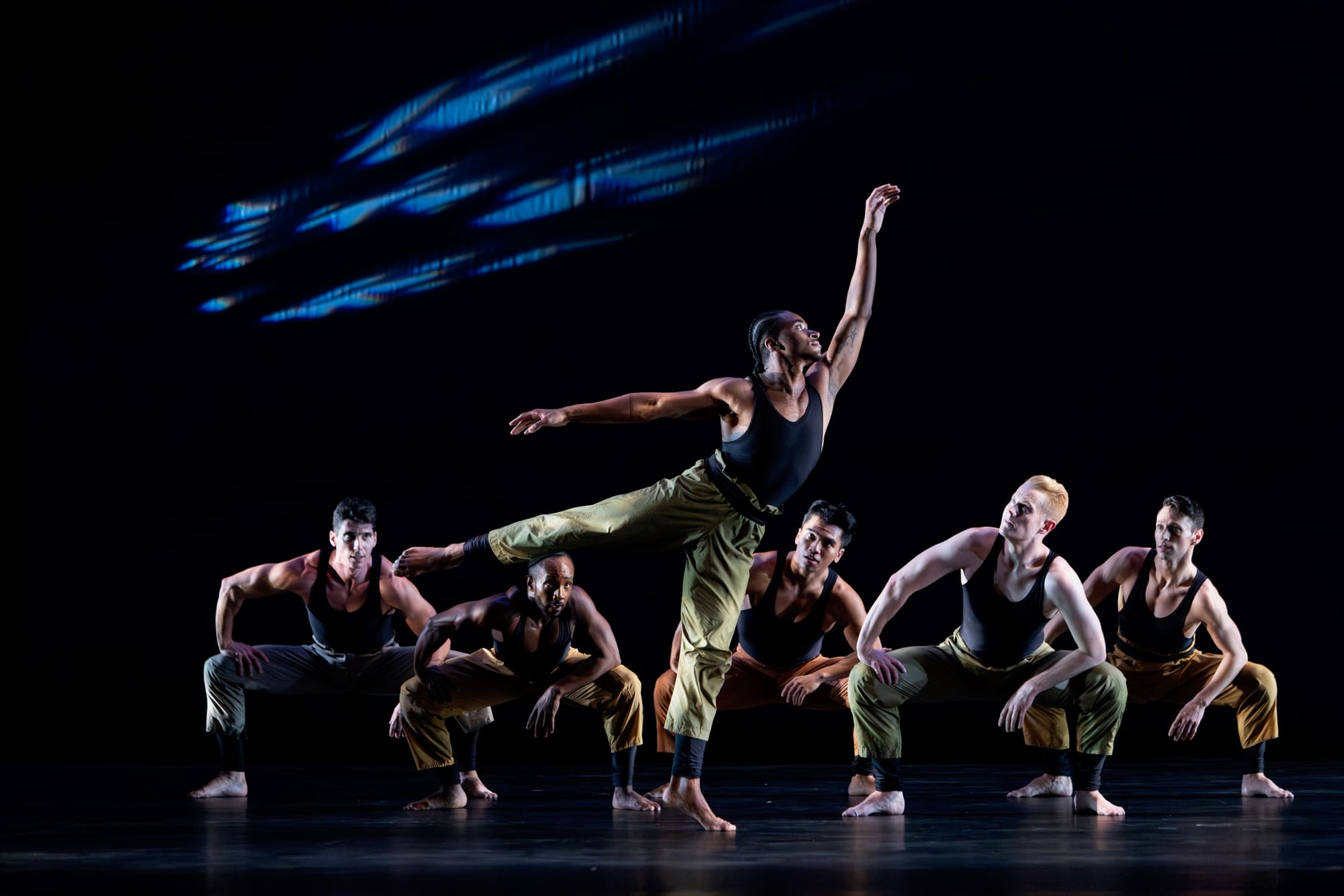
The energetic hub-bub paused now and then for breakout solos; Louis, with his controlled balances and loping jumps, Jada Pearman’s furious turns, and Clayton’s fluid arms stood out. The good humored energy finally turned a bit too frantic, as some of the moves became chaotically aggressive until Ho took charge and calmed everyone down. It ended with Ho in a circle of light, slowly revolving in her opening pose. The work is a glorious celebration of movement, a non-stop kaleidoscope of ever-changing shapes, and it is exhilarating to watch.
Copyright © 2024 by Mary Cargill



